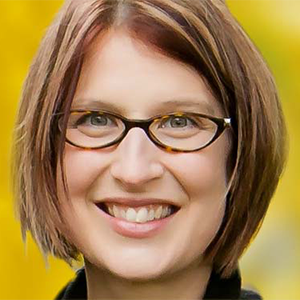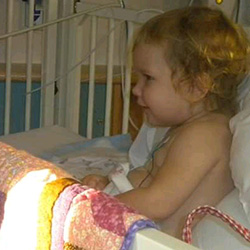 A guest blog post by Erica Barnes, Chloe Barnes Advisory Council on Rare Diseases Administrator.
A guest blog post by Erica Barnes, Chloe Barnes Advisory Council on Rare Diseases Administrator.
February 28th is international Rare Disease Day, which purpose is “to raise awareness for rare diseases and improve access to treatment and medical representation for individuals with rare diseases and their families.” When people hear the term “rare disease,” they often assume that it affects only a small portion of society. While this is true for individual diagnosis, when all 7,000 rare diseases are considered collectively, they affect a staggering 300 million people worldwide and about 1 in 10 of the US population.
Individuals diagnosed with a rare disease face a similar set of barriers when navigating the healthcare system. Abbey Meyers, a mother who founded the National Organization for Rare Disorders, once said, “Families affected by rare diseases represent a medically disenfranchised population that falls through the cracks of every healthcare system in the world.” Historically, these communities have operated in siloes. In recent years they have begun to work together to demand that the health system recognize their challenges and craft policies to address barriers.
 An individual’s journey with a rare disease often begins with no initial indication that a person has any medical issues. My daughter was born happy, and the medical community gave her a clean bill of health. Her newborn screen did not identify any concerns, and the very subtle signs associated with her rare disease were overlooked and dismissed. Sadly, this is the case for many patients since the signs and symptoms of rare diseases do not fit into a typical diagnostic paradigm. These dismissals result in significant delays to diagnosis – the average patient with a rare disease waits seven to eight years to be diagnosed. One rare mom and friend of mine waited six years for her son to be diagnosed. He passed away at age 7. Nearly the entire time she had with her son on this earth was consumed with the frantic search for answers. But the wait is only part of the story.
An individual’s journey with a rare disease often begins with no initial indication that a person has any medical issues. My daughter was born happy, and the medical community gave her a clean bill of health. Her newborn screen did not identify any concerns, and the very subtle signs associated with her rare disease were overlooked and dismissed. Sadly, this is the case for many patients since the signs and symptoms of rare diseases do not fit into a typical diagnostic paradigm. These dismissals result in significant delays to diagnosis – the average patient with a rare disease waits seven to eight years to be diagnosed. One rare mom and friend of mine waited six years for her son to be diagnosed. He passed away at age 7. Nearly the entire time she had with her son on this earth was consumed with the frantic search for answers. But the wait is only part of the story.
Families affected by rare diseases represent a medically disenfranchised population that falls through the cracks of every healthcare system in the world.
Rare individuals are also misdiagnosed on average two to three times. Misdiagnosis may mean they receive inappropriate medical treatments that are ineffective and sometimes harmful. These statistics represent enormous economic and emotional costs. When an individual is finally diagnosed, the short-lived relief is usually replaced by the nightmare of hearing the words from the medical community “I’m sorry, there is nothing we can do.” You see, 95% of rare patient populations have no available FDA-approved treatments. Our daughter passed away at age 2 from complications she experienced while receiving a bone marrow transplant, the only treatment available at the time.
I know these statistics are daunting, but the exciting news is that the future is bright for the rare disease community. In the last several years, strides in diagnostics and genetic research have opened doors to possible protocols that could significantly shorten the diagnostic odyssey I articulated. And rare disease research is ground zero for some of the most exciting medical advancements to come along in decades, such as gene therapy.
I’m sorry, there is nothing we can do.
All the scientific advancement in the world is meaningless if individual patients cannot access it. An urgent need in the rare disease community is ensuring that individual patients are fully integrated into the healthcare system. Policies must be crafted to ensure equitable access for all rare disease patients. While there are umbrella organizations such as the National Organization for Rare Disorders, the lack of a disease-specific organization often means that individuals diagnosed with these diseases have nobody to direct them to:
- Specialists that could treat their disease,
- Education around possible clinical trials to enroll in, and
- Help to navigate available resources and agencies.
Too often, it falls to patients to be disease experts, research funders, policy advocates, and health system navigators.
My own family felt the effects of the lack of resources over the years. I remember my husband and me hitting a breaking point after one of our fundraisers focused on raising money for research into our daughter’s rare disease. He asked me in exasperation, “Erica, why are you trying to do it all?” to which I responded, “Because it all has to be done!”
In 2019, I was honored to lead a coalition of patient advocates, medical professionals, and industry stakeholders that called on the Minnesota state legislature to create a Rare Disease Advisory Council. This grassroots coalition understood that a rare disease advisory council could provide the ecosystem to unify this nascent patient community and generate policy solutions to the complex, multifaceted problems the community faces. Since its inception, the Council has made it its mission to improve care for all Minnesotans living with a rare disease.
On February 28th, if you drive through the Twin Cities, you will see buildings lit up in green, blue, pink, and purple. These colors signify the multiple diagnoses that make up the rare disease community. When you see these lights, join me in the hope that in 2022 we will see tangible progress in ensuring that each person in Minnesota receives equitable access to healthcare and treatment regardless of how rare their condition may be.